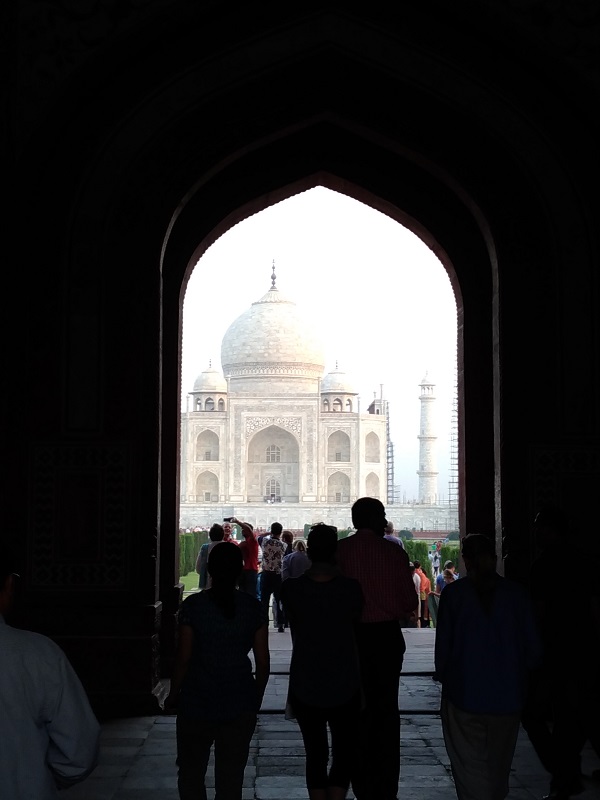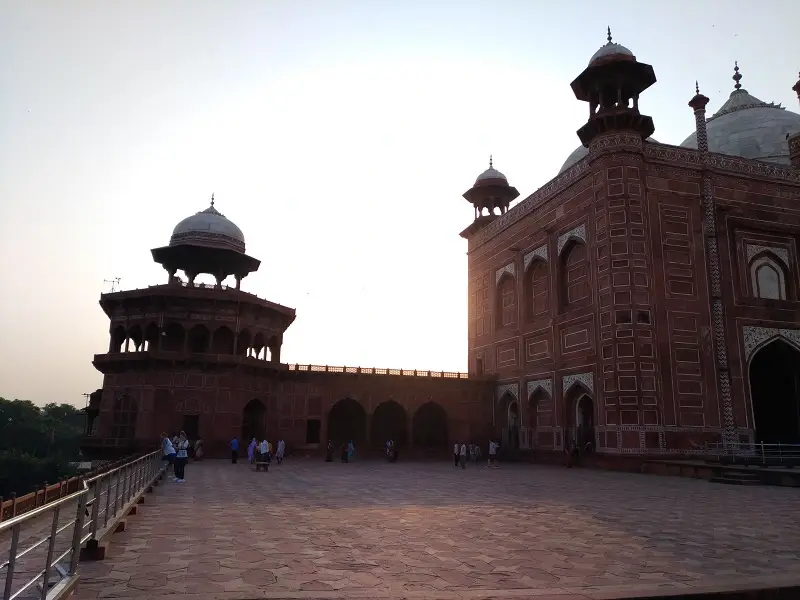Agra's colonial connection
Agra, the Capital city of much of Mughal reign, happily flaunts its Mughal culture. But very few know that the city had a sizeable presence of Europeans much before British colonial rule in India
Mention Agra and the mesmerizing vision of the famous monument to love, the Taj Mahal, floats before the mind’s eye. Indeed, its architecture is such that once visited, its beauty lasts in the mind forever. Perhaps, this is the reason that this iconic monument figures among the Seven Wonders of the world. But how many know that the city houses one more Taj Mahal? Surprising but true. Just a few miles away from the iconic structure lies another Taj Mahal, known as John Hessing Tomb aka Red Taj Mahal. Located in the Roman Catholic Cemetery of Agra, it is also a tomb, but built by a wife for her beloved husband. Though, it is not as grand and opulent as the Taj Mahal, it is quite similar in design. It is the perfect replica of the Taj Mahal but smaller in size. Built in red sandstone, the structure stands on a square platform with a corridor around it. It showcases the rich Mughal architecture, even though the grave belongs to a European. The tomb has a simple façade, comprising four arches surrounding a large arched gateway that leads to the grave. It has a dome above the main section with decorative chattris (canopies) on each corner. Inside lies the grave of John Hessing with an English inscription engraved on it. John Hessing was a Dutch traveller, who came India for better prospects. He served with the troops of Marathas in Agra and in 1799 was given a command of the Agra Fort by Daulatrao Scindia. In 1803, the British army attacked the fort and John Hessing died defending the fort. Broken by her husband’s demise, his wife, Ann Hessing, commissioned this monument and tried to build it exactly like the Taj Mahal. Sadly, she ran out of the money and couldn’t complete it. Today, the tomb may be forgotten but it also echoes an era when European mercenaries and adventurers would come to India to try their fortune.
Also read: Delhi’s Jama Masjid: An architectural marvel (travellernook.com)
European influence

Contrary to popular belief that Agra only boasts of Mughal culture or architecture, a greater visit to the city will apprise one of a heavy European influence. This is what we noticed when we spent two days in the city, organised by Tourism Guild of Agra. It may surprise one that long before the British arrival in India, the city had a sizable presence of Europeans. Several monuments and graveyards in the city echo their presence. Very few people know that the city houses the oldest church in north India, built during Emperor Akbar’s rule. Located in the middle of the city, the church is testament to the European influence during the Mughal era. Today, it is known as Church of Pieta. In 1580, a delegation of three Jesuit priests reached Agra from Goa in Akbar’s court and sought permission to build a church in Agra. The emperor gave them land on the outskirts of Agra, near the Armenian settlement. What is more moving is that Akbar himself paid for the construction. Sadly, the church was destroyed when relations between the Mughals and Christians turned sour. In 1632 CE, Shah Jahan declared war on the Portuguese and defeated them two years later. This war led to the persecution of Christians in Agra and Akbar’s church was pulled down in 1635 CE. However, as relations improved between them, the church was rebuilt in 1636 CE. Today, this small church may be overshadowed by the grander St Peter’s church located just by it but entering it will take one back into history.
Also read: Manali: Where the grass is greener (travellernook.com)
A walk to the Roman Catholic Cemetery in Nehru Nagar would remind one of when the city had a large thriving community of Armenian Christian merchants, jewellers and bankers. The cemetery houses graves of many influential Europeans, who were employed in different princely states of India. Their epitaphs highlight how much they were attached to the local culture. They married local women and adopted local food and lifestyle. In fact, their tombs are a blend of European and late Mughal era. In the graveyard is buried a famous love story, that of Belgian soldier Walter Reinhardt Sombre, aka Samru, who eloped with an Indian woman. A small tomb was built by his wife in his memory.
Surely, one has heard about Queen Victoria and her handsome Indian servant Abdul Karim. After Victoria was crowned empress of India in 1858, she got Munshi Abdul Karim appointed as her Urdu teacher. The Munshi became a much-loved member of her household in Britain. Their camaraderie is visible in Agra, where Victoria Girls School was built on Abdul Karim’s land. Like these, there are several churches and monuments that remind one of a flourishing European culture in Agra. In short, the city was not only home to Mughals but Europeans even before colonial rule. And one can only learn about this rich history if one spends days, looking beyond the Taj Mahal.
.png)
